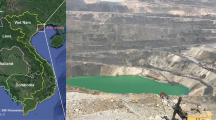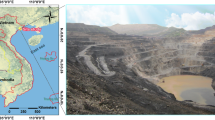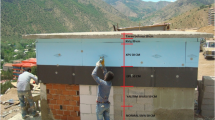Abstract
In the present study, the performance of the metal heater-based freeze prevention system was predicted with respect to the major design variables of outdoor fire piping, including the fire pipe diameter, outer temperature, and insulation thickness. To this end, CFD analysis was conducted to obtain water center temperature data along the pipe-length direction with respect to the major design variables. Subsequently, four AI algorithms, including the deep neural network, decision tree, random forest, and support vector machine, were trained with the collected data, and their prediction performance was compared. Further, each algorithm, once trained, was tested for its ability to make reasonable predictions for the conditions that it had not been trained with. Overall, the deep neural network model exhibited the best prediction performance for both interpolation and extrapolation data. As a result, the model was determined to be the most suitable for the prediction of the water temperature.
Similar content being viewed by others
References
M. Choi, B. Jeon and H. Choi, Comparison of the effects of straight and twisted heat trace installations based on three-dimensional unsteady heat transfer, Fire Science and Engineering, 30(1) (2016) 49–56.
M. Choi, D. Lee and H. Choi, Numerical analysis of unsteady heat transfer for the location selection of anti-freeze for the fire protection piping with electrical heat trace, Fire Science and Engineering, 28(1) (2014) 52–57.
M. Choi, B. Jeon and H. Choi, Numerical analysis of unsteady heat transfer for location selection of CPVC piping, Fire Science and Engineering, 29(6) (2015) 33–39.
M. H. Yang, S. J. Yang and W. H. Kim, Anti-freeze application in fire extinguishing facility piping for a warehouse building, Journal of the Korean Society of Hazard Mitigation, 20(1) (2020) 233–237.
M. C. Kwon, Python Machine Learning Perfect Guide, Wiki-books (2020).
D. Jang, J. Kang and J. Lim, A feasible strain-history extraction method using machine learning for the durability evaluation of automotive parts, Journal of Mechanical Science and Technology, 35(11) (2021) 5117–5125.
S. Lim, H. Lee and S. Song, Flow stress of Ti-6Al-4V during hot deformation decision trees modeling, Metals, 10(6) (2020) 739.
J. J. Kim, Golbin Hacker’s 3 Minutes Deep Learning, Hanbit Media (2018).
J. Zhao, H. Ding, W. Zhao, M. Huang, D. Wei and D. Jiang, Modelling of the hot deformation behaviour of a titanium alloy using constitutive equations and artificial neural network, Computational Materials Science, 92 (2014) 47–56.
G. Z. Quan, C. T. Yu, Y. Y. Liu and Y. F. Xia, A comparative study on improved arrhenius-type and artificial neural network models to predict high-temperature flow behaviors in 20MnNiMo alloy, The Scientific World Journal, 2014 (2014) 108492.
S. B. Kotsiantis, Decision trees: A recent overview, Artif Intell Rev., 39 (2013) 261–283.
A. Geron, Hands-On Machine Learning with Scikit-Learn and TensorFlow, Hanbit Media (2018).
Acknowledgments
This study has been conducted with the support of the Korea Institute of Industrial Technology as “Development of intelligent root technology with add-on modules” (KITECH EO-23-0007).
Author information
Authors and Affiliations
Corresponding author
Additional information
Hojoon Cho is an Executive Director of Afiliated Research Institute, NATM Co., Cheonan, Korea, since 2020. He received the Ph.D. in Mechanical Engineering from Inha university in 2008. His research interests include CAE and NVH of automotive system, high pressure vessel, and program development for prediction using AI in mechanical field.
Seongsik Lim is a Principal Researcher of molding and metal forming R&D Department, Korea Institute of Industrial Technology. He received his Ph.D. in Mechanical Engineering from Inha University. His research interests include material properties modeling and process optimization for metal forming process using CAE and AI.
Rights and permissions
About this article
Cite this article
Cho, H., Seo, S., Heo, C. et al. Performance estimation of freeze protection system for outdoor fire piping by using AI algorithm. J Mech Sci Technol 37, 5093–5101 (2023). https://doi.org/10.1007/s12206-023-0914-7
Received:
Revised:
Accepted:
Published:
Issue Date:
DOI: https://doi.org/10.1007/s12206-023-0914-7




